As loving pet parents, we often delight in sharing our lives, and sometimes even our meals, with our beloved canine companions. The bond we share with our dogs is truly special, and it’s natural to want to treat them or involve them in family activities, including mealtime. However, what’s good for us isn’t always good for our furry friends. Many common household foods, seemingly harmless to humans, can be extremely toxic, dangerous, and even fatal for dogs, even in small quantities. A staggering number of pet poisonings occur annually, with everyday foods being a significant contributor, highlighting the critical need for vigilance and informed decisions when it comes to your dog’s diet. Understanding what your dog can and cannot eat is not just about avoiding an upset stomach; it’s about safeguarding their health and well-being.
The digestive systems and metabolic processes of dogs are distinctly different from our own. This fundamental biological difference means that certain compounds, which we can easily process, become dangerous toxins in a dog’s body. For instance, theobromine in chocolate or xylitol in sugar-free products can rapidly accumulate to toxic levels in dogs, leading to severe health complications. Accidental ingestion can lead to a range of symptoms from mild gastrointestinal upset to life-threatening conditions such as organ failure, seizures, or even death. This comprehensive guide, crafted by experts at Dog Care Story, is designed to empower you with essential knowledge, serving as your ultimate resource on What Are Foods That Dogs Cannot Eat. We’ll delve into why certain foods pose a threat, provide a detailed list of common toxic foods, offer insights into safe alternatives, discuss which dogs are most at risk, and outline crucial steps for prevention and emergency response. Our aim is to equip you with the information needed to keep your cherished canine companion healthy, happy, and safe from preventable food-related incidents.
Understanding Canine Digestion: Why Some Human Foods Are Toxic
The primary reason many human foods are toxic to dogs lies in the fundamental differences between canine and human physiology, particularly concerning digestion and metabolism. While both species are omnivores, dogs have evolved with distinct metabolic pathways that process certain compounds very differently than humans. What might be a harmless, enjoyable treat for you could be a potent poison for your dog.
One of the most well-known examples is chocolate. Humans metabolize theobromine and caffeine – two compounds found in chocolate – relatively quickly. Dogs, however, process these methylxanthines much slower. This slower metabolism means that these substances linger in their system for an extended period, allowing them to accumulate to toxic levels that can affect the central nervous system and heart. The darker the chocolate, the higher the concentration of theobromine, and thus the greater the danger.
Similarly, fruits like cherries, peaches, and plums contain cyanide in their pits, stems, and leaves. While a human might accidentally ingest a small amount of cyanide without issue, a dog’s body is less equipped to handle even moderate exposure. The pits themselves can also cause physical obstruction in the gastrointestinal (GI) tract, leading to blockages and subsequent digestive upset like diarrhea, even if the cyanide content is not immediately fatal.
Another critical factor is the varying tolerance levels across different dogs. Food toxicity can be influenced by several factors, including the dog’s size, breed, age, and existing health conditions. A small amount of a toxic food that might cause mild symptoms in a large, healthy adult dog could be fatal for a small breed, a puppy, or an elderly dog with underlying health issues. For instance, some dogs are lactose intolerant, meaning dairy products cause severe gastrointestinal distress, whereas others might tolerate small amounts without issue. This variability underscores the importance of exercising extreme caution and always consulting with your veterinarian if you have any questions or concerns about specific foods. They can provide tailored advice based on your dog’s unique health profile, ensuring you’re making the safest choices for your furry family member. Being aware of these metabolic distinctions and individual sensitivities is the first step in protecting your dog from accidental food poisoning.
The Comprehensive List: Foods Dogs Cannot Eat
Many everyday household foods that we enjoy can be dangerous, and often toxic, to dogs. It’s crucial for every pet owner to be aware of these potential hazards. While this list provides extensive information on what are some foods dogs can’t eat, it is important to remember that it is not exhaustive. Always err on the side of caution and consult your veterinarian if you are unsure about a particular food.
1. Alcohol
Because dogs are significantly smaller than humans, alcohol has a much more profound and potentially deadly effect on them. Even minimal amounts of alcohol can lead to serious harm. The smaller your dog, the more dangerous even a tiny sip can be. Symptoms of alcohol poisoning in dogs mirror those in humans, including vomiting, disorientation, breathing difficulties, tremors, loss of coordination, coma, and even death. It’s found in alcoholic beverages as well as some raw doughs where yeast ferments sugars into alcohol.
 Dog looking unwell after possibly consuming alcohol
Dog looking unwell after possibly consuming alcohol
2. Apple, Apricot, Cherry, & Plum Seeds/Pits
While the fleshy part of apples, once cored and seeded, can be a safe treat, the core and apple seeds are definitely off-limits. Apple seeds contain cyanide, a potent toxin. Although small amounts might not immediately cause severe harm, it’s always safest to completely avoid giving your dog apple cores and seeds. Similarly, the seeds and pits from apricots, cherries, peaches, and plums should never be given to dogs. These fruit pits also contain cyanide, which interferes with the red blood cells’ ability to carry oxygen throughout the body. Ingesting these can lead to symptoms such as vomiting, irregular and rapid heartbeat, seizures, coma, and ultimately, death. Beyond the chemical toxicity, the hard pits can also pose a choking hazard or cause gastrointestinal obstruction. This is a key example of [what fruits are not allowed for dogs].
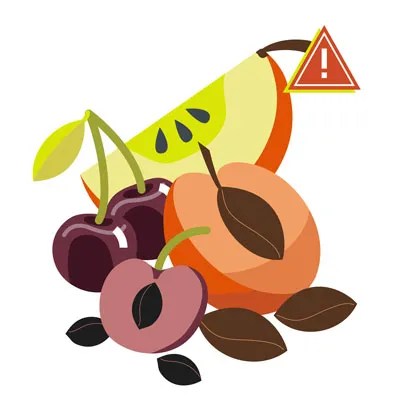 Close-up of various fruit seeds and pits including apple, apricot, cherry, and plum
Close-up of various fruit seeds and pits including apple, apricot, cherry, and plum
3. Avocado
Avocados are generally not recommended for dogs. They contain a fungicidal toxin called persin, which can cause vomiting and diarrhea in dogs and is known to be toxic to other animal species. Although some dog breeds may be more tolerant than others, it’s best to steer clear. A significant concern is also the large, hard pit, which poses a severe choking hazard and can lead to a dangerous gastrointestinal obstruction if swallowed whole, requiring emergency veterinary intervention. Given the availability of many safer and healthier alternatives, it’s wise to avoid feeding avocados to your dog altogether.
 A dog looking at a sliced avocado on a wooden board
A dog looking at a sliced avocado on a wooden board
4. Broccoli
Broccoli contains isothiocyanates, compounds that, in very large doses, can be harmful to pets, leading to mild to moderate gastrointestinal upset. While very small amounts of steamed or raw broccoli florets might be occasionally tolerated by some dogs, it’s generally best to avoid it, especially considering the abundance of safer vegetable options. The stalks can also present a choking hazard, particularly for smaller dogs, and can sometimes become lodged in the throat or digestive tract. For owners specifically researching [what vegetables are not good for dogs], broccoli is often listed with a caveat due to these compounds and potential physical hazards.
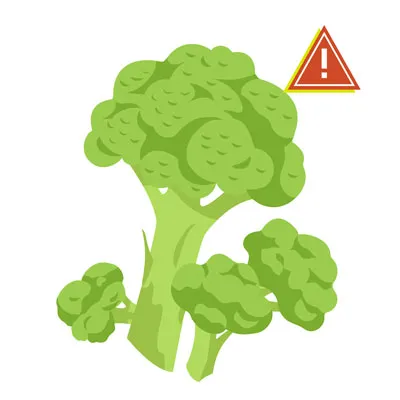 A dog looking at a piece of broccoli
A dog looking at a piece of broccoli
5. Caffeine and Coffee Grounds
Caffeine, found in coffee, tea, energy drinks, and some medications, contains methylxanthines. These stimulants can be highly toxic and potentially fatal for dogs. Even a small amount can cause a rapid and irregular heartbeat, hyperactivity, restlessness, vomiting, diarrhea, tremors, seizures, and collapse. Ingesting coffee grounds, tea bags, or even chocolate (which also contains caffeine and theobromine) can quickly lead to severe poisoning. The effects are more pronounced in smaller dogs due to their lower body weight. Always keep caffeinated products securely out of your dog’s reach.
 Coffee beans and grounds with a coffee cup, representing caffeine sources
Coffee beans and grounds with a coffee cup, representing caffeine sources
6. Chicken & Turkey Skin, Ham, & Other Fatty Cuts of Meat
Sharing fatty table scraps like chicken or turkey skin, ham, bacon, or other heavily marbled cuts of meat might seem like a kind gesture, but it’s detrimental to your dog’s health. The high fat content in these foods can trigger acute pancreatitis, a painful and potentially life-threatening inflammation of the pancreas. Pancreatitis can cause severe abdominal pain, vomiting, diarrhea, lethargy, and dehydration, often requiring intensive veterinary care. Furthermore, cooked bones, particularly from poultry, can splinter easily, posing a serious risk of choking, internal punctures, or blockages in the digestive tract, which can lead to fatal abdominal infections. It’s always safer to discard these items than to offer them to your pet.
 Various cuts of meat, including chicken and turkey skin, and ham
Various cuts of meat, including chicken and turkey skin, and ham
7. Chocolate
Chocolate is one of the most widely known toxic foods for dogs, and its ingestion is a frequent cause of pet poisoning. The danger stems from the presence of theobromine and caffeine, both methylxanthines, which dogs metabolize much more slowly than humans. This slow metabolism allows the toxins to build up to dangerous levels in their system. The darker and more bitter the chocolate (e.g., baker’s chocolate, dark chocolate), the higher the concentration of theobromine and thus the greater the toxicity. Milk chocolate and white chocolate are less potent but can still be harmful, especially in larger quantities or for smaller dogs. Sugar-free chocolate can also contain xylitol, an artificial sweetener that is highly toxic to dogs. Symptoms of chocolate toxicity include hyperactivity, vomiting, diarrhea, panting, increased thirst, tremors, abnormal heart rhythm, seizures, and in severe cases, death. If your dog consumes any amount of chocolate, regardless of how small, immediate veterinary attention is crucial. This is a prime example of [what human foods dogs can not eat] and is critical knowledge for every pet owner.
 Pieces of chocolate bar and chocolate chips
Pieces of chocolate bar and chocolate chips
8. Grapes & Raisins
Grapes and raisins are exceptionally dangerous for dogs and can cause acute kidney failure, even in small amounts. The exact toxic agent is tartaric acid, but the mechanism by which it causes kidney damage is still not fully understood. However, the severity of its effects is well-documented. Symptoms of grape or raisin poisoning typically include vomiting and diarrhea, lethargy, loss of appetite, abdominal pain, increased thirst, and changes in urination (either decreased urine production or absence of urine), which can be signs of kidney damage. Any ingestion of grapes or raisins should be treated as an emergency, warranting immediate veterinary care.
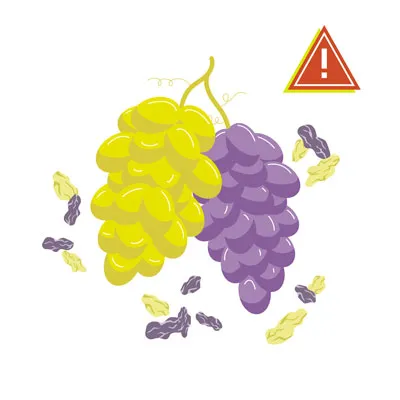 A bunch of grapes and a small pile of raisins
A bunch of grapes and a small pile of raisins
9. Macadamia Nuts, Almonds, & Pistachios
Macadamia nuts are highly toxic to dogs, capable of causing a range of painful symptoms including weakness, especially in the hind legs, tremors, vomiting, fever, and depression. While the precise toxic compound remains unknown, even a small quantity—as few as six nuts for a small dog—can lead to severe poisoning. These nuts are a clear example of what are some foods dogs can’t eat due to their unique toxicity.
Other nuts, like almonds and pistachios, are not necessarily toxic themselves, but they pose other significant risks. Their high fat content can lead to pancreatitis, similar to fatty meats. More critically, they are a considerable choking hazard, especially for smaller dogs, and their hard shells can cause gastrointestinal upset or obstruction. Furthermore, many commercially prepared nuts are salted or seasoned, which adds to their danger. Excessive salt intake can lead to sodium ion poisoning, causing tremors, seizures, and even coma. Therefore, it’s best to avoid feeding any type of nuts to your dog.
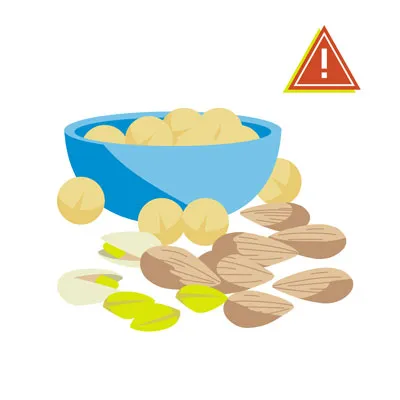 Various nuts including macadamia nuts, almonds, and pistachios
Various nuts including macadamia nuts, almonds, and pistachios
10. Milk & Dairy Products
The ability of dogs to tolerate milk and other dairy products varies greatly. Many adult dogs are lactose intolerant, meaning they lack the enzyme lactase needed to break down lactose, the sugar found in milk. For these dogs, consuming milk or dairy can lead to gastrointestinal upset, including diarrhea, vomiting, and excessive gas. While some dogs might be able to handle small amounts of plain, low-fat dairy, it’s generally safer to avoid it or offer it only in very small quantities if you know your dog tolerates it.
High-fat dairy products like ice cream are particularly problematic due to their sugar and fat content, which can contribute to weight gain and pancreatitis. Instead of ice cream, consider freezing healthy fruits that your dog can safely enjoy. Small amounts of low-fat cheese might be acceptable as an occasional treat if your dog shows no signs of intolerance, but always introduce new foods cautiously.
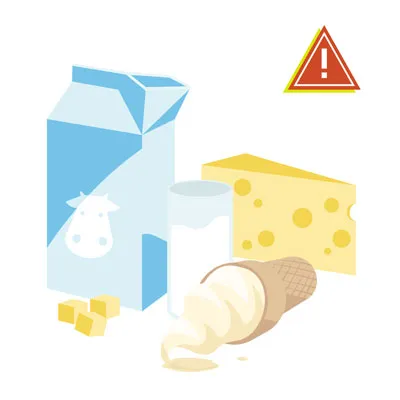 A bowl of milk and some cheese cubes
A bowl of milk and some cheese cubes
11. Mushrooms
It is generally recommended to avoid feeding mushrooms to your dog, especially wild mushrooms. Many species of wild mushrooms are highly toxic and can cause severe health issues, including kidney and liver failure, vomiting, diarrhea, neurological symptoms like hallucinations and tremors, and damage to red blood cells. While commercially grown, washed white mushrooms from the grocery store are often considered safe in small quantities, there’s always a risk of misidentification or contamination. Given the potential severity of mushroom poisoning, it’s usually safer to choose a different, unequivocally safe treat for your dog.
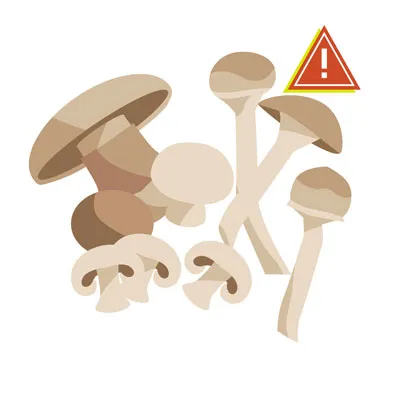 Assortment of various types of mushrooms
Assortment of various types of mushrooms
12. Nutmeg & Cinnamon
Dogs should never be fed foods containing nutmeg. This spice contains myristicin, a compound that can cause hallucinations, disorientation, rapid heart rate, high blood pressure, and severe vomiting. The effects are more pronounced with higher doses or in smaller dogs. Even if your dog seems to be begging for a dessert spiced with nutmeg, resist the urge to share. If any amount of nutmeg is ingested, contact your veterinarian immediately.
Cinnamon is not considered toxic in small amounts, but it can be an irritant. Inhaling powdered cinnamon can cause coughing, choking, and irritation to the respiratory tract. Consuming larger amounts can irritate a dog’s mouth and digestive system, potentially leading to discomfort or an upset stomach. In some cases, it can also lead to a dangerous drop in blood sugar. It’s best to avoid both spices in your dog’s diet.
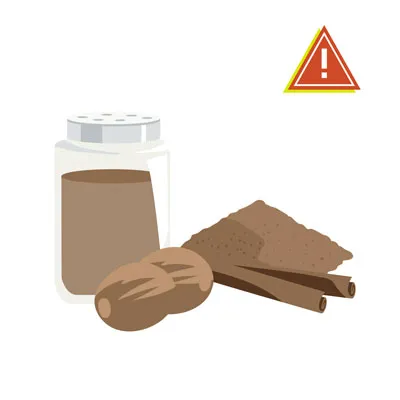 Spices: ground nutmeg and cinnamon sticks
Spices: ground nutmeg and cinnamon sticks
13. Onions, Garlic, Chives, & Leeks
All members of the Allium family, including onions, garlic, chives, and leeks, are highly toxic to dogs and cats. These plants contain sulfoxides and disulfides, compounds that can damage red blood cells, leading to a condition called hemolytic anemia. This can result in weakness, lethargy, pale gums, rapid breathing, and even collapse. Toxicity can occur from raw, cooked, dehydrated, or powdered forms of these ingredients. Onion and garlic powders are commonly found in many prepared foods, including baby food and broths, so it’s critical to meticulously read food labels before offering any store-bought human food to your pet. Some dog breeds, particularly Japanese breeds like Akitas and Shiba Inus, are reported to be even more sensitive to Allium plants, but they pose a danger to all dogs regardless of breed. This category is another essential entry in [what vegetables are not good for dogs].
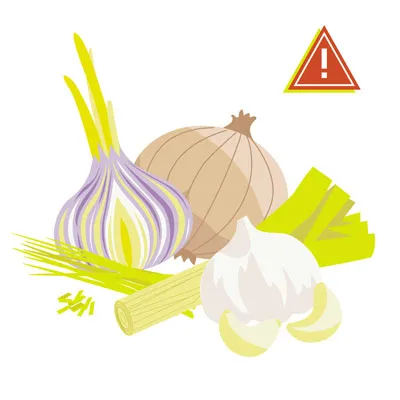 A collection of onions, garlic cloves, chives, and leeks
A collection of onions, garlic cloves, chives, and leeks
14. Salt
While dogs need a small amount of sodium in their diet, excessive salt intake is extremely dangerous and can lead to sodium ion poisoning. This can disrupt the fluid balance in your dog’s cells, leading to symptoms such as excessive thirst and urination, vomiting, diarrhea, tremors, seizures, and in severe cases, kidney damage, coma, or death. Foods high in salt include potato chips, pretzels, salted nuts, and many processed snacks. Even accidental ingestion of rock salt (used for de-icing) or homemade play dough (which often contains high amounts of salt) can be life-threatening. Always opt for unsalted, unseasoned treats for your dog.
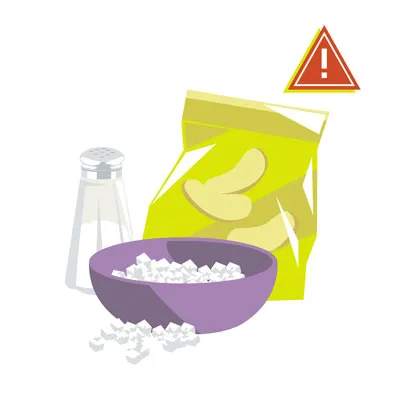 A pile of coarse salt crystals
A pile of coarse salt crystals
15. Spicy Food
Spicy foods, whether from chili peppers, hot sauces, or heavily spiced dishes, should be strictly avoided for dogs. The capsaicin in spicy foods can cause severe gastrointestinal distress, leading to intense stomach upset, vomiting, diarrhea, and abdominal pain. Beyond the immediate discomfort, repeated exposure can potentially lead to more serious issues like stomach ulcers. While not directly toxic in the same way as chocolate or xylitol, the pain and digestive upset caused by spicy food can be significant and may require veterinary intervention. Keep your pup away from any fiery flavors.
 Various chili peppers and spices, indicating spicy food
Various chili peppers and spices, indicating spicy food
16. Sugar-Free Gum & Candy (Xylitol)
Xylitol is an artificial sweetener commonly found in many sugar-free human products, including gum, candies, mints, baked goods, certain brands of peanut butter, toothpaste, and some medications. For dogs, xylitol is profoundly toxic. Even small amounts can trigger a rapid and significant drop in blood sugar (hypoglycemia), leading to symptoms like weakness, disorientation, vomiting, tremors, and seizures. In more severe cases, xylitol can cause acute liver failure, which is often fatal. The number of dog poisoning cases involving xylitol is alarmingly on the rise. For instance, the xylitol content in just five pieces of sugar-free gum can be lethal to a 65-pound dog. Always check ingredient labels for xylitol before giving your dog any human food, especially peanut butter.
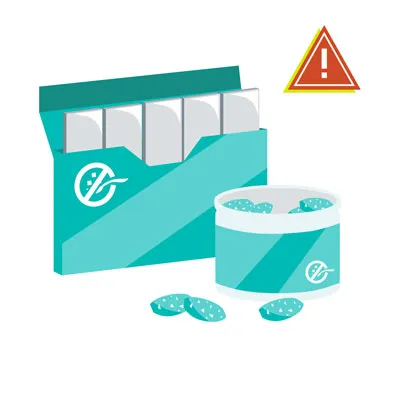 Sugar-free gum and candies, representing products containing xylitol
Sugar-free gum and candies, representing products containing xylitol
17. Tomatoes & Raw Potatoes
Tomatoes and potatoes fall into a category of “safe in some forms, unsafe in others.” Ripe red tomatoes are generally considered safe for dogs in moderation. However, the green parts of the tomato plant—leaves, stems, and unripe green tomatoes—contain solanine, a glycoalkaloid that is toxic to dogs. Solanine can cause severe gastrointestinal upset, lethargy, weakness, and confusion.
Similarly, cooked potatoes (baked or boiled, without any additives like butter, salt, or spices) are generally safe in small amounts. However, raw potatoes, especially green ones or those sprouting, also contain solanine and are toxic. Symptoms of solanine poisoning are similar to those for green tomatoes. Always ensure any potatoes given to your dog are fully cooked, peeled (to remove any green skin), and plain.
 Ripe red tomatoes and raw potatoes, illustrating the safe vs. unsafe forms
Ripe red tomatoes and raw potatoes, illustrating the safe vs. unsafe forms
18. Tobacco
Tobacco, in any form, is highly dangerous and unhealthy for your dog. Nicotine, the active compound in tobacco products (cigarettes, cigars, chewing tobacco, e-cigarettes, nicotine patches), is a potent neurotoxin. Exposure to nicotine-containing products can cause a wide range of symptoms, including vomiting, diarrhea, rapid or labored breathing, agitation, abnormal heart rate, wobbliness, muscle weakness, changes in blood pressure, tremors, and seizures. More significant or frequent exposure can lead to severe neurological depression, blue gums (due to lack of oxygen), coma, and ultimately, can be fatal. Dogs are naturally curious and may ingest discarded cigarette butts on walks or nose through ashtrays. If your dog gets into tobacco, immediate veterinary attention is an absolute necessity.
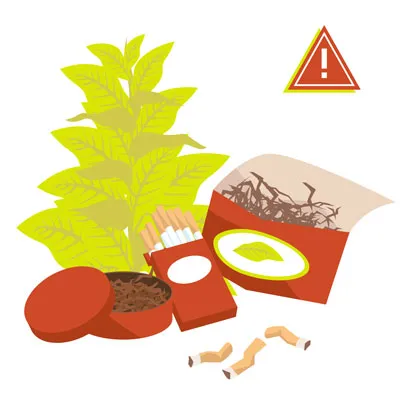 Cigarettes and tobacco products, representing nicotine sources
Cigarettes and tobacco products, representing nicotine sources
19. Yeast & Raw Dough
Yeast and raw dough are unsafe for dogs for two primary reasons, both of which can be life-threatening. Firstly, raw dough, especially bread dough containing yeast, can expand significantly in a dog’s warm stomach. This expansion can cause severe abdominal pain, bloating, and can lead to a potentially fatal condition called gastric dilation-volvulus (GDV), or bloat, where the stomach twists. Secondly, the yeast and sugar in raw dough ferment, producing alcohol as a byproduct. This process can lead to alcohol toxicity, causing symptoms similar to alcohol poisoning, including disorientation, vomiting, weakness, central nervous system depression, and liver damage. Given these severe risks, immediate medical intervention is required if your dog ingests raw dough.
 A bowl of raw dough and yeast packets
A bowl of raw dough and yeast packets
20. Raw Meat
Never feed your dog raw or undercooked meat, poultry, or eggs. While some advocate for raw diets, the potential risks far outweigh any perceived benefits for the average pet owner. Raw meat can harbor dangerous bacteria such as Salmonella, E. coli, Listeria, and Campylobacter, which can cause severe gastrointestinal illness in dogs, and potentially be transmitted to humans. Additionally, raw meat often contains bones, which pose significant choking hazards and can splinter, causing internal injuries, perforations, or obstructions in the digestive tract. The Centers for Disease Control and Prevention (CDC) advises against feeding raw pet foods due to these public health risks.
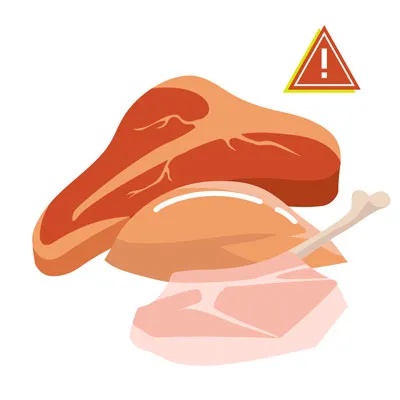 Raw meat (ground beef or steak) on a cutting board
Raw meat (ground beef or steak) on a cutting board
21. Rhubarb
Rhubarb, a plant commonly used in desserts like pies, is not safe for pets. Its leaves contain soluble calcium oxalate crystals. If ingested in sufficiently large quantities, these crystals can bind with calcium in your dog’s body, causing a dangerous drop in blood calcium levels (hypocalcemia) and potentially leading to acute renal (kidney) failure. Symptoms of rhubarb poisoning include tremors, weakness, excessive drooling, blood in the urine, changes in thirst and urination patterns, and vomiting. All parts of the rhubarb plant are considered toxic, but the leaves contain the highest concentration of oxalates.
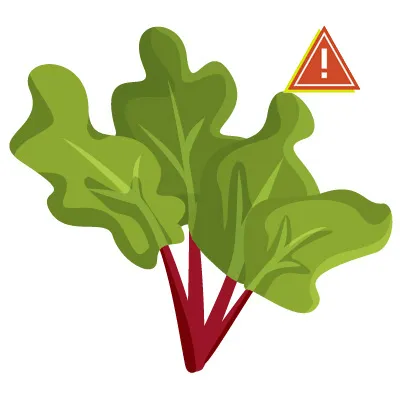 Fresh rhubarb stalks with leaves
Fresh rhubarb stalks with leaves
22. Star Fruit
Similar to rhubarb, star fruit (carambola) also contains soluble calcium oxalate crystals. This makes it unsafe for dogs to consume. Ingesting star fruit can lead to symptoms similar to rhubarb poisoning, including acute kidney injury and hypocalcemia. Therefore, it’s best to keep your dog away from this exotic fruit.
 Slices of star fruit on a plate
Slices of star fruit on a plate
23. Flavored Water and Seltzer Water
It’s always best to give your dog fresh, clean, plain water. Flavored waters and seltzer water, while seemingly innocuous, can contain added ingredients that are unsafe for pups. Many flavored waters contain artificial sweeteners, including xylitol, which, as discussed, is highly toxic to dogs. They can also be high in sugar or salt, both of which are detrimental to canine health. Plain seltzer or carbonated water might be okay in very small, infrequent amounts if your dog tolerates it, but the carbonation can cause gas, bloating, and discomfort. Given the risks, and the availability of the safest option—plain water—there’s no reason to experiment with flavored or carbonated beverages for your dog.
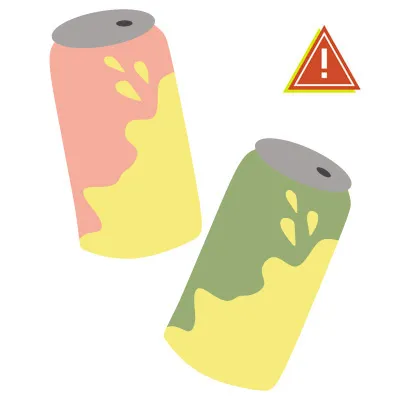 A glass of seltzer water with lime slices
A glass of seltzer water with lime slices
Essential Knowledge: Safe Human Foods for Dogs
While the list of foods that dogs cannot eat is extensive and crucial to understand, it’s equally comforting to know that there’s a wide variety of human foods that are perfectly safe and even beneficial for your canine companion. Incorporating these healthy options into your dog’s diet, in moderation and with proper preparation, can provide additional nutrients and serve as delightful treats. Always remember to introduce new foods slowly and in small quantities to observe for any sensitivities or digestive upset. Consulting your veterinarian before making significant dietary changes is always recommended, especially if you’re wondering [what human food can poodles eat] or have a dog with specific dietary needs or allergies.
1. Apples, Oranges, & Bananas
Apples are a fantastic, crunchy treat for dogs, but only the fleshy part. It is critical to remove the core and all seeds, as apple seeds contain cyanide. Cut apples into small, bite-sized pieces to prevent choking. Oranges can be given in small amounts; make sure to remove all peel and seeds, as the peel can cause digestive upset. Bananas, without the peel, are also a safe and energy-boosting treat in moderation, providing good sources of potassium and vitamins.
 Sliced apples, oranges, and bananas arranged on a plate
Sliced apples, oranges, and bananas arranged on a plate
2. Blueberries & Blackberries
These small, juicy berries are packed with antioxidants, fiber, phytochemicals, and Vitamin C, making them an excellent healthy treat for your dog. Most dogs adore blueberries and blackberries, which can be given fresh or frozen as a refreshing snack. Their small size makes them easy for most dogs to consume without a choking risk.
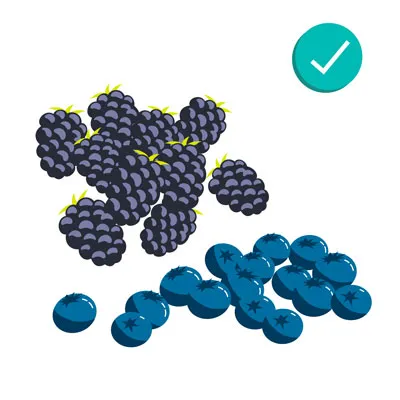 Fresh blueberries and blackberries in a bowl
Fresh blueberries and blackberries in a bowl
3. Cantaloupe, Mango, Peaches, Pears, Pineapples, & Watermelons
Many fruits offer safe and delicious options for your dog. Cantaloupe is a great choice, rich in vitamins. Watermelon, mostly water, is especially refreshing on a warm day, but always remove the rind and all seeds (even the pale seeds in seedless varieties can pose a choking risk). Mangoes, peaches, pears, and pineapples are also safe in moderation. For all these fruits, ensure you remove any seeds, pits, and cores before offering them to your pup, as these parts can be toxic or cause physical obstructions.
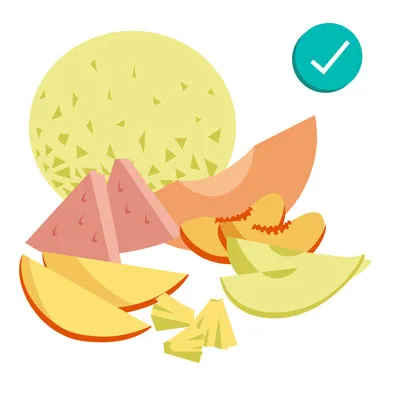 Various sliced fruits including cantaloupe, mango, peaches, pears, pineapples, and watermelon
Various sliced fruits including cantaloupe, mango, peaches, pears, pineapples, and watermelon
4. Carrots, Cucumber, and Celery
When looking for healthy, low-calorie options, remember the “three C’s”: carrots, cucumbers, and celery. These vegetables and fruits are particularly excellent choices for overweight dogs due to their high water content and low-calorie count. Bite-sized carrot pieces provide a satisfying crunch and are rich in beta-carotene. Celery bites also offer a fun crunch and can help with bad breath, while cucumber slices are packed with vitamins and minerals with very few carbohydrates or fats. Always wash these thoroughly and cut them into manageable pieces to prevent choking.
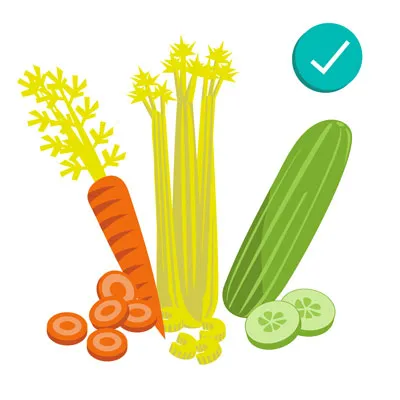 Fresh carrots, cucumber slices, and celery sticks
Fresh carrots, cucumber slices, and celery sticks
5. Cheese
While excessive dairy can be problematic for lactose-intolerant dogs, small amounts of cheese can be an acceptable treat for some. If your dog doesn’t exhibit signs of lactose intolerance (like gas or diarrhea), a tiny piece of low-fat cheese, such as mozzarella or cottage cheese, can be a high-value reward. Avoid high-fat varieties and always introduce it cautiously. Your veterinarian can advise on the best type and quantity for your specific dog.
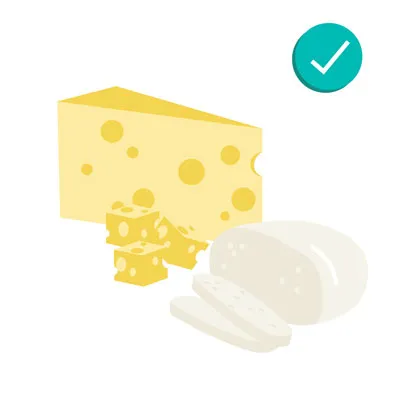 Various types of cheese, including sliced and cubed
Various types of cheese, including sliced and cubed
6. Eggs
Fully cooked eggs are a wonderfully tasty and nutritious treat for your dog. Scrambled or hard-boiled eggs offer a great source of protein, vitamins, and minerals. They can also be particularly helpful in soothing an upset stomach. Always ensure eggs are thoroughly cooked to eliminate any risk of Salmonella contamination. Never offer raw eggs.
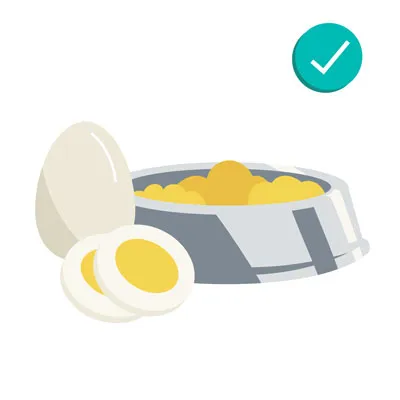 A cracked egg in a bowl and a cooked egg
A cracked egg in a bowl and a cooked egg
7. Peanuts, Peanut Butter, and Cashews
Plain, unsalted peanuts and cashews are safe for dogs in very small quantities due to their high fat content, which can contribute to pancreatitis if given excessively. Ensure they are unflavored and unsalted. Peanut butter, in moderation, is a popular and delicious high-protein treat for many dogs. Crucially, always choose unsalted, plain peanut butter that does NOT contain xylitol, an artificial sweetener highly toxic to dogs. Always check the ingredient label carefully.
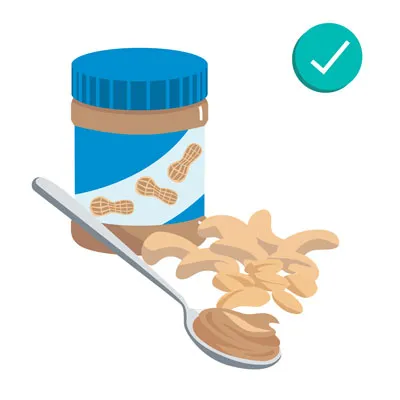 Peanuts, a jar of peanut butter, and cashews
Peanuts, a jar of peanut butter, and cashews
8. Popcorn and Corn
Air-popped, plain popcorn (without salt, butter, or oil) can be a fun, occasional treat for your dog. It’s important to thoroughly check for and remove any unpopped kernels, as these can pose a choking hazard or cause dental issues. Similarly, plain corn (removed from the cob) is acceptable when served without butter, salt, or spices. Corn on the cob, however, should be avoided as the cob itself can cause a serious intestinal obstruction if swallowed.
 Air-popped popcorn and corn kernels
Air-popped popcorn and corn kernels
9. Coconut and Honey
In small amounts, plain coconut (flesh, milk, and oil) is generally safe for dogs. Coconut contains lauric acid, which may offer some health benefits, including supporting skin health and potentially helping with allergies. However, some dogs may experience an upset stomach from fresh coconut or coconut milk, so introduce it cautiously. Avoid coconut water due to its high potassium content, which can be problematic, and never let your dog chew on the fibrous, furry shell, as it presents a choking risk. Honey, also in moderation, is safe and can provide beneficial vitamins and minerals. It can be a good source of natural energy.
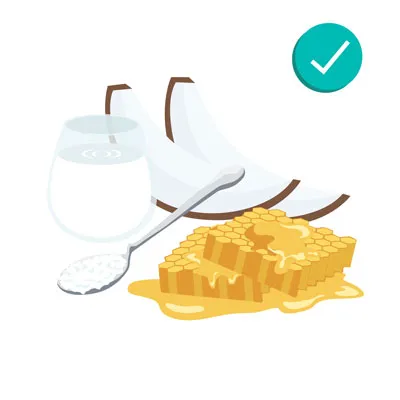 Fresh coconut pieces and a jar of honey
Fresh coconut pieces and a jar of honey
10. Shrimp and Fish
Plain, fully cooked shrimp is an excellent, lean protein source for your dog. Always remove the shell, head, tail, and legs, and ensure it’s unseasoned, unsalted, and unbuttered. Fish, particularly salmon and sardines, can also be a healthy addition to your dog’s diet. It’s rich in omega-3 fatty acids, beneficial for skin and coat health. Ensure fish is always plain, fully cooked, and completely boneless. A good guideline is to offer fish as a treat no more than twice a week. Plain, canned tuna, packed in water (not oil) and low in sodium, is also safe in moderation to avoid excessive mercury and salt intake.
 Cooked shrimp and a piece of cooked fish
Cooked shrimp and a piece of cooked fish
11. Turkey
Cooked turkey meat, when prepared correctly, is a healthy and safe source of protein for dogs. Always remove all skin, excess fat, and especially bones before offering it. Bones, particularly cooked ones, can splinter and cause severe internal damage. Ensure the turkey is plain, unseasoned, and unsalted. Small bites of cooked turkey can be a delicious and beneficial treat.
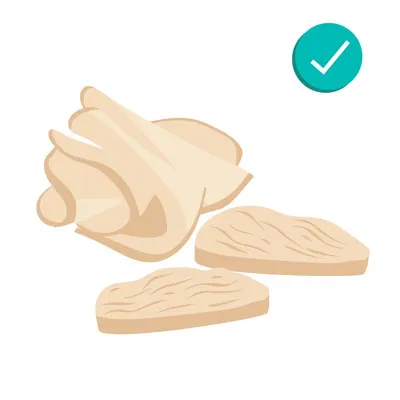 Cooked turkey slices
Cooked turkey slices
12. Grains, Wheat, and Quinoa
Grains like wheat and corn, often used as fillers in commercial dog foods, are generally safe for dogs unless they have a specific allergy. A little bit of cooked wheat or other grains, provided they don’t cause an allergic reaction, can be an energy source. Quinoa, a complete protein, is a particularly healthy grain option for dogs when cooked plain. As with any new food, introduce grains slowly and monitor your dog for any signs of allergies or digestive upset.
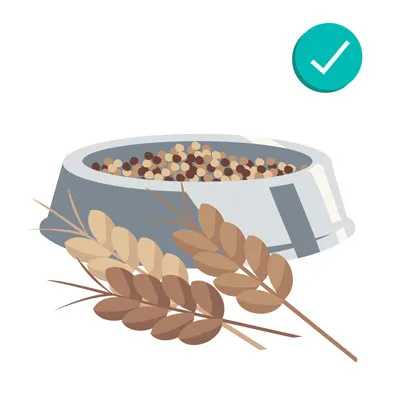 Various grains including wheat kernels and cooked quinoa
Various grains including wheat kernels and cooked quinoa
13. Green Beans
Green beans are a highly recommended and popular vegetable treat for dogs. They are safe, tasty, and healthy, offering a good source of fiber, vitamins, and minerals while being low in calories. Green beans can be served raw, steamed, or from a can (ensure canned varieties are plain, low-sodium, and without added spices or oils). Always cut them into small, bite-sized pieces to prevent choking, especially for smaller dogs. Many dogs enjoy their satisfying crunch.
 Fresh green beans
Fresh green beans
Who Is Most At Risk? Identifying Vulnerable Dogs
While all dogs are susceptible to the dangers of toxic foods, certain factors can significantly increase a dog’s risk of severe illness or fatality from ingesting harmful substances. Understanding these vulnerabilities can help pet parents implement even stricter preventative measures for their at-risk companions.
- Small Breeds vs. Large Breeds: Smaller dogs are generally more vulnerable to food toxicities due to their lower body weight. A smaller amount of a toxic substance, like chocolate or xylitol, can achieve a much higher concentration per pound of body weight in a small dog compared to a large dog, leading to more severe symptoms and a higher risk of fatal outcomes. This is a crucial consideration for owners of breeds such as Chihuahuas, Pomeranians, or Yorkshire Terriers.
- Puppies: Young dogs have less developed digestive and immune systems, making them more susceptible to illness from food toxins. Their metabolism is still maturing, and their bodies may be less efficient at processing and eliminating harmful compounds. Additionally, puppies are often more curious and prone to exploring their environment with their mouths, increasing their likelihood of accidental ingestion.
- Elderly Dogs: Older dogs, like puppies, can be at higher risk. Their organ functions, particularly the liver and kidneys (which are vital for detoxification and elimination), may not be as robust as in younger adult dogs. Many elderly dogs also have pre-existing health conditions that can be exacerbated by toxic food ingestion.
- Dogs with Pre-Existing Conditions: Dogs with underlying health issues such as diabetes, kidney disease, liver disease, pancreatitis, or compromised immune systems are particularly vulnerable. For instance, a dog with kidney disease will struggle even more to process and eliminate toxins that affect the kidneys (like grapes), while a dog prone to pancreatitis will be at a much higher risk from fatty foods. These conditions can make their bodies less resilient to the assault of toxic substances, leading to more severe and often life-threatening complications.
Being aware of these factors for your individual dog is paramount. If your dog falls into one or more of these high-risk categories, maintaining an extra layer of vigilance and having an immediate action plan in case of accidental ingestion becomes even more critical.
Proactive Steps: Preventing Toxic Food Ingestion
Accidents can happen, but as responsible pet parents, we can take proactive and consistent steps to significantly minimize the risk of our beloved dogs getting into unsafe human food. Prevention is always the best approach when it comes to safeguarding your dog’s health.
- Store Foods Out of Reach and Securely: This is the most fundamental step. Ensure all potentially toxic human foods are stored in places your dog cannot access. This means keeping dangerous items on high shelves, locked away in cabinets that your clever pup cannot open, or in sealed, dog-proof containers. Don’t underestimate your dog’s ability to sniff out and reach food, even if it seems impossible. Child-proof latches on cabinets can also be dog-proof.
- Avoid Feeding Dogs from Your Plate or While Cooking: Establishing a strict rule against feeding your dog from the table or giving them scraps while you’re preparing meals is crucial. This habit not only teaches them to beg but also increases the chances of accidentally dropping or intentionally giving them something harmful. It’s safest to only give your pup treats that are specifically formulated and designed for dogs, ensuring their safety and appropriate nutrition.
- Educate Family Members and Guests: Ensure everyone in your household, including children, and any visitors are aware of the rules regarding feeding your dog. Explain the dangers of certain human foods and emphasize that, no matter how tempting or “sad” your dog’s eyes might be, they should never sneak any food to your pet. Post a list of forbidden foods on your fridge as a visual reminder.
- Be Extra Careful During Holidays and Gatherings: Holidays like Thanksgiving, Christmas, or parties often involve an abundance of rich, fatty, and potentially toxic human foods. The increased activity, distractions, and presence of guests who may not be aware of your dog’s dietary restrictions can make it easy to let your guard down. Be extra cautious during these times, perhaps even keeping your dog in a separate, secure area when food is present or guests are eating. Ensure all plates, serving dishes, and trash cans are immediately cleared and secured.
- Secure Your Trash Bins: Dogs have an uncanny ability to raid trash cans. Invest in sturdy, dog-proof trash bins with secure lids that your dog cannot knock over or open. This prevents them from accessing discarded food scraps, packaging that might contain traces of toxins, or bones.
- Supervise Your Dog in the Kitchen and Dining Areas: Whenever you are cooking or eating, keep a close eye on your dog. If you cannot supervise them directly, it’s safer to confine them to another room or a crate to prevent accidental ingestion of dropped food.
- Know Your Outdoor Surroundings: If your dog spends time in a yard or garden, be aware of any potentially toxic plants or dropped fruits/vegetables that might grow there (e.g., rhubarb, mushrooms, fallen fruit with pits).
Despite all precautions, accidents can sometimes happen. If your dog does manage to eat something toxic, being prepared can make all the difference. Keep contact information for your veterinarian, the nearest 24/7 emergency veterinary clinic, and a pet poison control hotline easily accessible (e.g., on your phone and posted visibly in your home). This preparedness ensures you can act fast in a critical situation.
Emergency Protocol: What To Do If Your Dog Eats Something Dangerous
Despite all your efforts in preventing access to harmful foods, accidents can still occur. Knowing how to react quickly and appropriately if your dog eats something toxic is crucial for their survival and recovery. Time is often of the essence in these situations.
First, you need to be familiar with the symptoms of food toxicity, as they can vary widely depending on the substance ingested. Common signs include:
- Vomiting (with or without blood)
- Diarrhea (with or without blood)
- Lethargy, weakness, or depression
- Excessive drooling
- Loss of appetite
- Increased thirst and urination
- Tremors, muscle spasms, or seizures
- Disorientation or hyperactivity
- Abnormal heart rate or breathing
- Abdominal pain or bloating (stomach feels hard to the touch)
- Pale gums
- Collapse or coma
If you observe any of these symptoms, or if you suspect your dog has ingested a toxic food, act immediately:
- Call Your Veterinarian or a Pet Poison Control Hotline Right Away: Do not wait to see if symptoms develop or worsen. Timing is vital, as early intervention can significantly improve the prognosis. Have your vet’s number, or the number for a poison control center (like the ASPCA Animal Poison Control Center or Pet Poison Helpline) readily available.
- Be Ready with All Important Information: When you call, be prepared to provide as much detail as possible:
- What was eaten? Identify the specific food (e.g., dark chocolate, sugar-free gum, grapes). If possible, have the product packaging or a photo of it.
- How much was consumed? Estimate the quantity (e.g., one square of chocolate, five pieces of gum, a handful of raisins).
- When was it ingested? Provide an approximate time of ingestion.
- Your dog’s breed, weight, age, and any existing medical conditions.
- Any symptoms your dog is currently exhibiting.
- Avoid Home Remedies Unless Instructed by a Veterinarian: Do NOT attempt to induce vomiting or administer any home remedies (such as activated charcoal) unless explicitly advised and guided by your veterinarian or poison control expert. Forcing vomiting can be harmful in certain situations, such as if your dog ingested a corrosive substance, a sharp object, or is already lethargic or convulsing. The appropriate treatment depends entirely on what was ingested, the amount, and your dog’s current condition. Follow professional advice precisely.
- Transport Your Dog Safely: If advised to bring your dog to the clinic, transport them safely and calmly. Bring any packaging of the ingested food with you.
Being prepared with this emergency protocol can make a critical difference in the outcome for your dog. Early and professional intervention is key to managing food toxicities effectively.
Conclusion
Navigating the world of human foods for our beloved canine companions requires diligence, knowledge, and a commitment to their safety. As dedicated experts at Dog Care Story, our goal is to empower you with the most accurate and actionable information on what are foods that dogs cannot eat. We’ve journeyed through the intricate reasons behind canine food toxicities, presented a comprehensive list of common household dangers from alcohol to xylitol, and highlighted the importance of understanding the risks associated with different food items. While the list of forbidden foods can seem daunting, remember that awareness is your most powerful tool in preventing accidental poisonings.
Beyond the dangers, we’ve also celebrated the array of safe and healthy human foods that, when prepared correctly and offered in moderation, can enrich your dog’s diet and strengthen your bond. From crunchy carrots to lean cooked turkey, there are plenty of wholesome treats to choose from. Ultimately, the responsibility lies with us, the pet parents, to be vigilant, to educate our households, and to maintain a secure environment where tempting but toxic foods are kept far from curious paws and noses.
The health and well-being of your furry family member are priceless. Should an unexpected ingestion occur, knowing the symptoms and having an emergency plan in place can be life-saving. Remember, your veterinarian is an invaluable resource, always ready to provide expert guidance tailored to your dog’s unique needs. At Dog Care Story, we are dedicated to helping you keep your dog healthy and happy. For those unexpected moments when your dog encounters a toxic substance, pet insurance can provide a crucial safety net, helping to cover the costs of emergency veterinary care. Pets Best offers customizable dog and puppy insurance plans, along with a 24/7 Pet Helpline, ensuring you have access to veterinary experts whenever you need peace of mind. Continue exploring our vast library of resources on dog care to ensure your canine companion lives their best, safest life.
References
- “Top 10 dog poisons,” Hilary Parker (5/2023), WebMD, https://www.webmd.com/pets/dogs/top-10-dog-poisons
- “What happens if a dog eats chocolate?” (10/2023), Colorado State University, https://vetmedbiosci.colostate.edu/vth/animal-health/why-is-chocolate-bad-for-dogs/
- “Fruits and vegetables dogs can or can’t eat,” (3/2024), American Kennel Club, https://www.akc.org/expert-advice/nutrition/fruits-vegetables-dogs-can-and-cant-eat/
- “What to do if your dog drinks alcohol,” Jerry Klein (7/2023), American Kennel Club, https://www.akc.org/expert-advice/vets-corner/is-alcohol-dangerous-for-dogs/
- “Can dogs eat apples?” Hector Joy (12/2022), PetMD, https://www.petmd.com/dog/general-health/can-dogs-eat-apples
- “Can dogs eat plums?” Katie Koschalk (7/2023), Chewy, https://be.chewy.com/nutrition-pet-diet-tips-can-dogs-eat-plums/
- “Avocado (Persea spp) Toxicosis in Animals,” Cristine Hayes (9/2024), Merck Veterinary Manual, https://www.merckvetmanual.com/toxicology/food-hazards/avocado-persea-spp-toxicosis-in-animals
- “People foods to avoid feeding your pets,” (n.d.), ASPCA, https://www.aspca.org/pet-care/animal-poison-control/people-foods-avoid-feeding-your-pets
- “People foods dogs can and can’t eat,” (3/2024), American Kennel Club, https://www.akc.org/expert-advice/nutrition/human-foods-dogs-can-and-cant-eat/
- “Can dogs eat nuts?” Amanda Ardente (1/2023), PetMD, https://www.petmd.com/dog/nutrition/can-dogs-eat-nuts
- “Can dogs drink milk?” Sandra C. Mitchell (1/2024), PetMD, https://www.petmd.com/dog/nutrition/can-dogs-drink-milk
- “Can dogs have nutmeg?” Barri J. Morrison (11/2023), PetMD, https://www.petmd.com/nutmeg-safe-dogs
- “Onion, garlic, chive, and leek poisoning in dogs,” Renee Schmid et al. (2024), VCA Animal Hospitals, https://vcahospitals.com/know-your-pet/onion-garlic-chive-and-leek-toxicity-in-dogs
- “Can dogs eat tomatoes?” Anna Burke (10/2024), American Kennel Club, https://www.akc.org/expert-advice/nutrition/can-dogs-eat-tomatoes/
- “Can dogs eat potatoes?” Katherine Ripley (11/2023), American Kennel Club, https://www.akc.org/expert-advice/nutrition/can-dogs-eat-potatoes/
- “What to do if your dog eats a cigarette butt,” (6/2023), American Kennel Club, https://www.akc.org/expert-advice/health/dog-ate-cigarette-butt/
- “Dough & dogs: Why it’s bad and what you can do,” Lisa Goldstein (7/2024), Preventive Vet, https://www.preventivevet.com/dogs/dough-is-toxic-to-dogs
- “Rhubarb,” (n.d.), Pet Poison Helpline, https://www.petpoisonhelpline.com/poison/rhubarb/
- “Can dogs drink carbonated water?” Heather Logue (n.d.), Rover, https://www.rover.com/blog/can-dogs-drink-carbonated-water/
- “What fruits can dogs eat?” Ellen Malmanger (2/2024), PetMD, https://www.petmd.com/dog/nutrition/what-fruits-can-dogs-eat
- “Can dogs have green beans?” Anna Burke (8/2022), American Kennel Club, https://www.akc.org/expert-advice/nutrition/can-dogs-have-green-beans/
- “About pet food safety,” (4/2024), CDC, https://www.cdc.gov/healthy-pets/about/pet-food-safety.html
